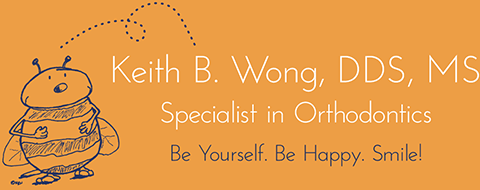For those considering changes to their smiles, the question to answer is how best to fix crooked teeth or correct one’s occlusion. Is Invisalign effective? Are braces required? Are there any other methods? And, finally, who should one see, a general dentist or an orthodontist?
Human teeth have no “natural” pattern of occlusion or appearance that is consistent across individuals. The appearance of the teeth depends upon idiosyncratic biological relationships of the upper and lower jaws (the maxilla and mandible) to one another and to the shape and size of the teeth erupting from them. The advent of orthodontics, the first dental specialty to come into existence, created the possibility of arranging teeth in the jaws to enhance the function and stability of teeth over the lifespan and to create a smile that is aesthetically pleasing both to the patient and to others. Due to the importance of a smile in conveying warmth and creating connections, as well as a greatly lengthened human lifespan, what began as an exciting possibility has evolved to become a standard of care, especially in wealthy nations such as the United States and others. The methods to provide that care have greatly evolved, also, making orthodontics a sought-after specialty.
How Orthodontists Straighten Crooked Teeth or Misaligned Bites
The methods available to effect changes to the bite and smile have greatly expanded, with the specialty of orthodontics now able to treat very complex problems through the use of a variety of oral appliances, surgical intervention, and coordination with other specialties such as periodontics, oral surgery, pedodontics, and prosthodontics. The age range for treatment has also changed since the initial days of the specialty, with orthodontists employing advanced tools and methods that allow them to treat young children, teenagers, young adults, and older adults, including seniors. Advanced orthodontic appliances that orthodontists employ include plastic aligners such as Invisalign, precision braces such as precision, custom brackets, and the Brava lingual, behind-the-teeth device, among others. The choice of the appliance is individual to the patient, with the orthodontist presenting the appropriate and best options to achieve the patient’s goals.
Can Invisalign Effectively Straighten Teeth? Are Braces Required?
A majority of patients visiting an orthodontist for an examination inquire about aligner treatment, most commonly known through the Invisalign brand name. Invisalign is a powerful tool in the hands of a skilled orthodontist who specifies tooth movements from the beginning to the end of treatment within the Invisalign dashboard by using its virtual tools to customize treatment for each patient. Invisalign’s software generates only a baseline treatment that is insufficient and is overwritten by the orthodontist. Orthodontic training and expertise are required to address anything more complex than very mild crowding in an otherwise balanced bite (occlusion). This limitation explains both early failures with Invisalign aligners and the current problems experienced at times by general dentists, who are unfamiliar with comprehensive orthodontic treatment diagnosis and planning. Invisalign in the experienced hands of an orthodontist can certainly be used in a wide variety of cases to straighten crooked, misaligned teeth and correct bites.
Straightening Teeth with Braces and Other Fixed Appliances
Invisalign is not the only treatment method for straightening crooked teeth and is not always the best choice for every patient. For reasons of treatment efficiency or convenience for the patient, fixed appliances may prove to be a better choice. A skilled orthodontist can determine the best and appropriate options for each patient and will present those options during the initial examination. The patient will be given the opportunity to choose from the recommended methods.
Options for fixed-appliance treatment, as mentioned above, included braces—individual brackets placed on each tooth and engaged by an archwire—and, in my own practice, the Brava lingual appliance that sits behind the teeth and is completely invisible to an onlooker. Custom precision brackets, when used for braces, increase the precision of movement and shorten treatment time. The Brava appliance moves each tooth individually, unlike either Invisalign aligners or braces, which has great advantages in terms of speed and proper sequencing of tooth movements. One of these methods, due to the movements required for proper treatment or the patient’s assessment of treatment tolerance or willingness to handle and wear Invisalign aligners consistently, may prove to be a better choice.
Fixed appliances such as braces and Brava can create more force than the incremental plastic aligners of Invisalign and can move teeth in a consistent, sweeping motion, which speeds treatment, especially when large movements are required or when molars must be moved. Molar movement is complex and is, consequently, not allowed in the Invisalign Go version supplied to general dentists. An orthodontist, unlike a general dentist, can use Invisalign to move molars, as well as make other complex movements. The advantages of fixed appliances, therefore, are speed and patient convenience for those who do not wish to handle and clean removable aligners.
Choices for Correcting Crooked Teeth or a Misaligned Bite
Invisalign aligners, custom precision brackets, and lingual appliances such as Brava can all be used to straighten teeth or create a proper occlusion or bite. An experienced orthodontist will consider many factors, including current occlusion/bite, patient age and the corresponding anticipated facial changes, the present relationship of facial bones and teeth, periodontal conditions, and patient preferences before making recommendations. In most cases, Invisalign can be used effectively by an experienced orthodontist, even when molars must be moved. Fixed-appliance options such as precision braces and the behind-the-teeth Brava appliance may also be recommended and may be preferred by some patients.
If you would like to learn more about options for orthodontic treatment or are ready to schedule a complimentary exam, feel free to reach out to my office below.
